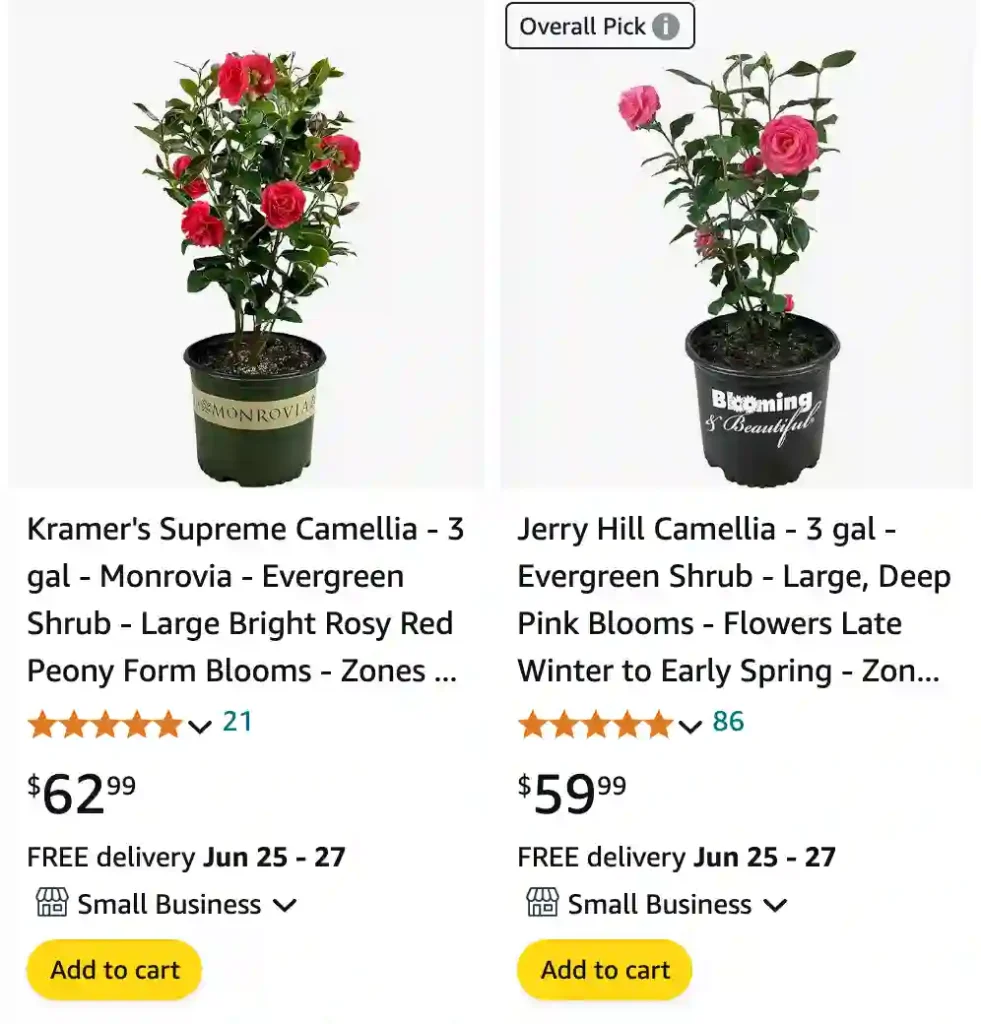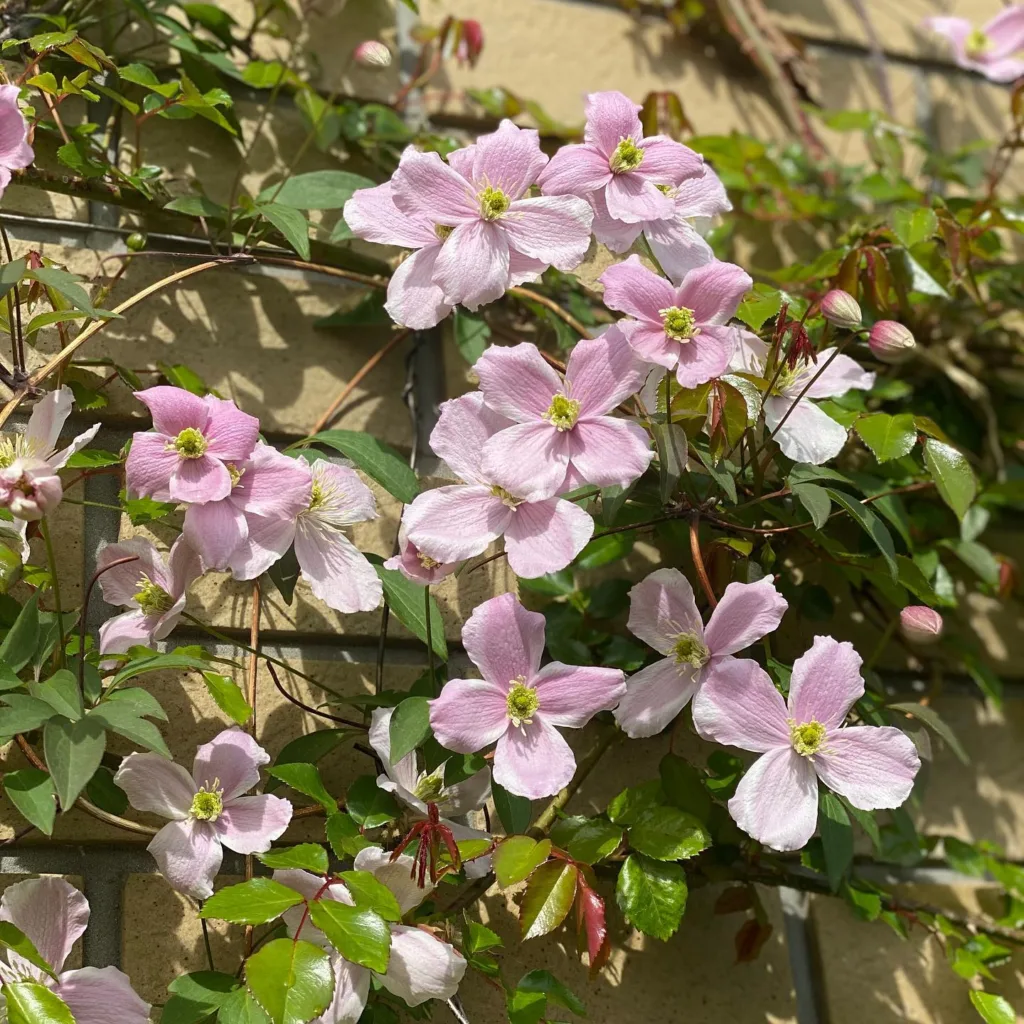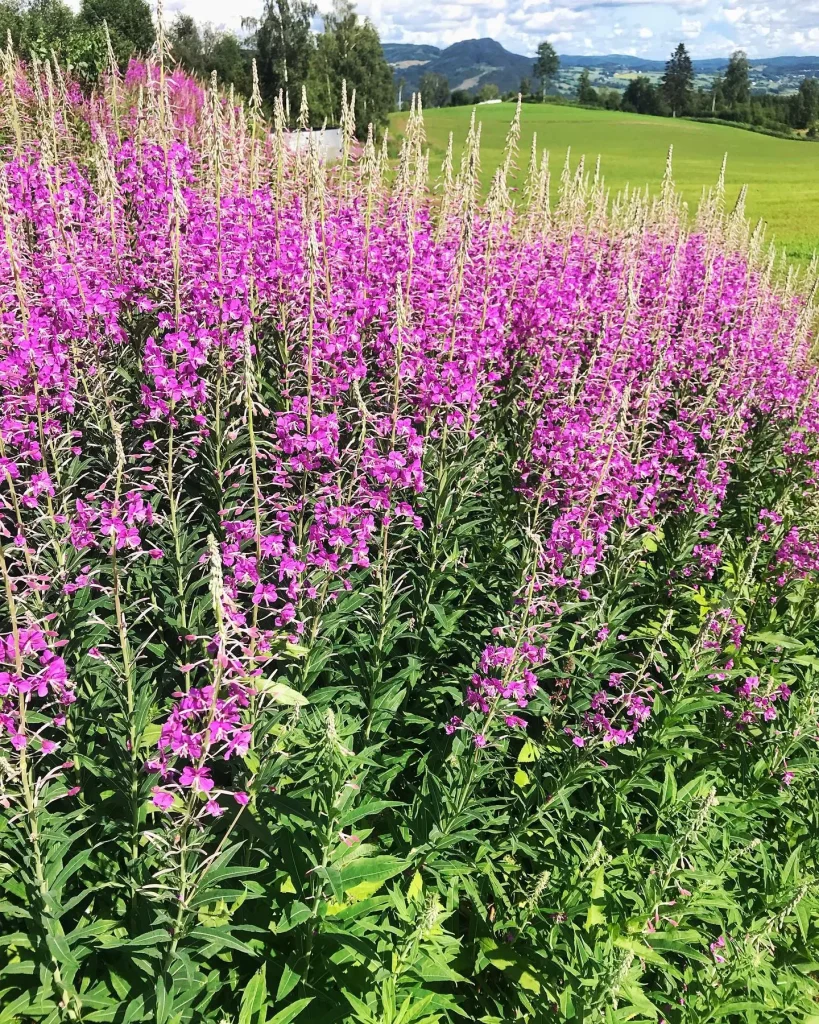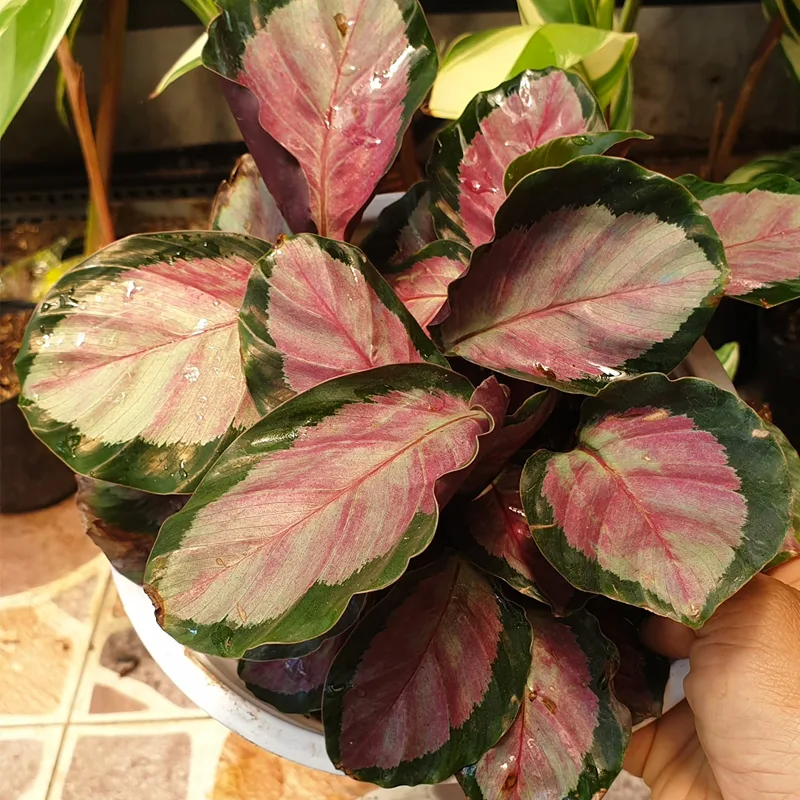
Unveiling the Allure of Camellias: A Gardener’s FAQ
Camellias have captivated me for years. Their elegant blooms and enduring presence in my winter garden make them a true treasure. But as I delved deeper into their world, I realized there was so much more to learn. So, I decided to compile this handy guide for fellow camellia enthusiasts, answering the most frequently asked questions.
What is a Camellia?
Camellias are evergreen shrubs or small trees belonging to the Theaceae family. Native to East Asia, particularly China, Japan, and Korea, they boast an impressive variety of over 250 species. Renowned for their exquisite flowers, camellias come in a dazzling array of colors, from classic white and deep red to vibrant pinks and soft pastels. Their glossy, deep green foliage adds year-round beauty, making them a valuable addition to any garden.
Camellia species
- Camellia amplexicaulis (Pit.) Cohen-Stuart
- Camellia amplexifolia Merr. & Chun
- Camellia anderseniae Orel
- Camellia andrefrancisii Orel & Curry
- Camellia anlungensis Hung T.Chang
- Camellia annamensis N.S.Lý, V.D.Luong, N.D.Do, T.H.Lê & Thi L.Nguyen
- Camellia assimiloides Sealy
- Camellia aurea Hung T.Chang
- Camellia azalea C.F.Wei
- Camellia bidoupensis Truong, Luong & Tran
- Camellia brevistaminata Orel & Curry
- Camellia brevistyla (Hayata) Cohen-Stuart
- Camellia bugiamapensis Orel, Curry, Luu & Q.D.Nguyen
- Camellia campanulata Orel, Curry & Luu
- Camellia candida Hung T.Chang
- Camellia capitata Orel, Curry & Luu
- Camellia cattienensis Orel
- Camellia caudata Wall.
- Camellia chekiangoleosa Hu
- Camellia cherryana Orel
- Camellia chinmeiae S.L.Lee & T.Y.A.Yang
- Camellia chrysanthoides Hung T.Chang
- Camellia columna Orel & Curry
- Camellia compacta Orel & Curry
- Camellia concinna Orel & Curry
- Camellia connata (Craib) Craib
- Camellia corallina (Gagnep.) Sealy
- Camellia cordifolia (F.P.Metcalf) Nakai
- Camellia costata S.Y.Hu & S.Y.Liang
- Camellia costei H.Lév.
- Camellia crapnelliana Tutcher
- Camellia crassipes Sealy
- Camellia crassiphylla Ninh & Hakoda
- Camellia crassisepala Orel & Curry
- Camellia crispula Hung T.Chang
- Camellia cupiformis T.L.Ming
- Camellia cuspidata (Kochs) Bean
- Camellia dalatensis V.D.Luong, Ninh & Hakoda
- Camellia debaoensis R.C.Hu & Y.Q.Liufu
- Camellia dilinhensis Ninh & V.D.Luong
- Camellia discorsa Orel & Curry
- Camellia dormoyana (Pierre) Sealy
- Camellia drupifera Lour.
- Camellia edithae Hance
- Camellia elizabethae Orel & Curry
- Camellia elongata (Rehder & E.H.Wilson) Rehder
- Camellia erubescens Orel & Curry
- Camellia euphlebia Merr. ex Sealy
- Camellia euryoides Lindl.
- Camellia exigua Orel & Curry
- Camellia fangchengensis S.Ye Liang & Y.C.Zhong
- Camellia fansipanensis J.M.H.Shaw, Wynn-Jones & V.D.Nguyen
- Camellia fascicularis Hung T.Chang
- Camellia flava (Pit.) Sealy
- Camellia flavida Hung T.Chang
- Camellia fleuryi (A.Chev.) Sealy
- Camellia flosculora Curry, V.S.Le, T.Q.Cuong & V.D.Luong
- Camellia fluviatilis Hand.-Mazz.
- Camellia foleyana Orel & Curry
- Camellia forrestii (Diels) Cohen-Stuart
- Camellia fragilis Orel & Curry
- Camellia fraterna Hance
- Camellia fulva Orel & Curry
- Camellia furfuracea (Merr.) Cohen-Stuart
- Camellia gaudichaudii (Gagnep.) Sealy
- Camellia gilbertii (A.Chev.) Sealy
- Camellia glabricostata T.L.Ming
- Camellia gracilipes Merr. ex Sealy
- Camellia grandibracteata Hung T.Chang, Y.J.Tan, F.L.Yu & P.S.Wang
- Camellia granthamiana Sealy
- Camellia grijsii Hance
- Camellia guanwuensis S.S.Ying
- Camellia gymnogyna Hung T.Chang
- Camellia hainanica Y.L.Zhao & Z.G.Xu
- Camellia hainingii S.X.Yang & Y.S.Huang
- Camellia hamyenensis Ninh & Le
- Camellia harlandii Orel & Curry
- Camellia hatinhensis V.D.Luong, Ninh & L.T.Nguyen
- Camellia hekouensis C.J.Wang & G.S.Fan
- Camellia hiemalis Nakai
- Camellia hiepii V.S.Dang, Vuong, V.C.Nguyen & V.D.Luong
- Camellia hirsuta Hakoda & Ninh
- Camellia hoabinhensis V.D.Luong, Ninh & V.T.Pham
- Camellia honbaensis Luu, Q.D.Nguyen & G.Tran
- Camellia hongiaoensis Orel & Curry
- Camellia hongkongensis Seem.
- Camellia hsinpeiensis S.S.Ying
- Camellia huana T.L.Ming & W.J.Zhang
- Camellia huulungensis Rosmann & Ninh
- Camellia ilicifolia Y.K.Li
- Camellia illia Orel & Curry
- Camellia impressinervis Hung T.Chang & S.Ye Liang
- Camellia indochinensis Merr.
- Camellia ingens Orel & Curry
- Camellia insularis Orel & Curry
- Camellia × intermedia (Tuyama) Nagam.
- Camellia inusitata Orel, Curry & Luu
- Camellia japonica L.
- Camellia kirinoi Ninh
- Camellia kissi Wall.
- Camellia krempfii (Gagnep.) Sealy
- Camellia kwangsiensis Hung T.Chang
- Camellia lanceolata (Blume) Seem.
- Camellia langbianensis (Gagnep.) P.H.Hô
- Camellia laotica (Gagnep.) T.L.Ming
- Camellia latifolia Orel & Curry
- Camellia lawii Sealy
- Camellia leptophylla S.Ye Liang ex Hung T.Chang
- Camellia longicalyx Hung T.Chang
- Camellia longii Orel & Luu
- Camellia longipedicellata (Hu) Hung T.Chang & D.Fang
- Camellia longissima Hung T.Chang & S.Ye Liang
- Camellia lucii Orel & Curry
- Camellia luongii Ninh & Le
- Camellia lutchuensis T.Itô
- Camellia luteocalpandria S.X.Yang & E.D.Liu
- Camellia luteocerata Orel
- Camellia luteoflora Y.K.Li ex Hung T.Chang & F.A.Zeng
- Camellia luteonerva Orel & Curry
- Camellia luteopallida V.D.Luong, T.Q.T.Nguyen & Luu
- Camellia mairei (H.Lév.) Melch.
- Camellia maoniushanensis J.L.Liu & Q.Luo
- Camellia megasepala Hung T.Chang & Trin Ninh
- Camellia melliana Hand.-Mazz.
- Camellia micrantha S.Ye Liang & Y.C.Zhong
- Camellia mileensis T.L.Ming
- Camellia mingii S.X.Yang
- Camellia minima Orel & Curry
- Camellia mollis Hung T.Chang & S.X.Ren
- Camellia multigemma Orel & Curry
- Camellia murauchii Ninh & Hakoda
- Camellia namkadingensis Soulad. & Tagane
- Camellia nematodea (Gagnep.) Sealy
- Camellia neriifolia Hung T.Chang
- Camellia nervosa (Gagnep.) Hung T.Chang
- Camellia ngheanensis N.D.Do, V.D.Luong, N.S.Lý, T.H.Lê & D.H.Nguyễn
- Camellia ninhii V.D.Luong & Le
- Camellia oleifera C.Abel Plant FAQs: Camellia Oleifera
- Camellia pachyandra Hu
- Camellia pallida Orel & Curry
- Camellia parviflora Merr. & Chun ex Sealy
- Camellia parvimuricata Hung T.Chang
- Camellia parvula Orel & Curry
- Camellia paucipunctata (Merr. & Chun) Chun
- Camellia pentagonalema Orel & Curry
- Camellia petelotii (Merr.) Sealy
- Camellia phanii Hakoda & Ninh
- Camellia philippinensis Hung T.Chang & S.X.Ren
- Camellia phuongchiana Curry, V.H.Quach, T.T.Hoang & Q.C.Truong
- Camellia piloflora S.X.Yang
- Camellia pilosperma S.Yun Liang
- Camellia pingguoensis D.Fang
- Camellia piquetiana (Pierre) Sealy
- Camellia pirifructa Orel & Curry
- Camellia pitardii Cohen-Stuart
- Camellia pleurocarpa (Gagnep.) Sealy
- Camellia polyodonta F.C.How ex Hu
- Camellia proensis V.D.Luong, Dudkin & V.H.Quach
- Camellia psilocarpa X.G.Shi & C.X.Ye
- Camellia ptilophylla Hung T.Chang
- Camellia pubicosta Merr.
- Camellia pubifurfuracea Y.C.Zhong
- Camellia pubipetala Y.Wan & S.Z.Huang
- Camellia puhoatensis N.S.Lý, V.D.Luong, T.H.Lê, D.H.Nguyễn & N.D.Do
- Camellia pukhangensis N.D.Do, V.D.Luong, S.T.Hoang & T.H.Lê
- Camellia pulchella Orel & Curry
- Camellia punctata (Kochs) Cohen-Stuart
- Camellia pyriformis T.S.Hoang & T.N.Bon
- Camellia pyriparva Orel & Curry
- Camellia pyxidiacea Z.R.Xu, F.P.Chen & C.Y.Deng
- Camellia quangcuongii L.V.Dung, S.T. Hoang & Nhan
- Camellia quephongensis Hakoda ex Le
- Camellia quynhii V.D.Luong, V.H.Quach & T.T.Hoang
- Camellia reticulata Lindl.
- Camellia rhytidocarpa Hung T.Chang & S.Ye Liang
- Camellia rosacea Tagane, Soulad. & Yahara
- Camellia rosiflora Hook.
- Camellia rosmannii Ninh
- Camellia rosthorniana Hand.-Mazz.
- Camellia rostrata S.X.Yang & S.F.Chai
- Camellia rubriflora Ninh & Hakoda
- Camellia rusticana Honda
- Camellia salicifolia Champ.
- Camellia saluenensis Stapf ex Bean
- Camellia sasanqua Thunb.
- Camellia scabrosa Orel & Curry
- Camellia sealyana T.L.Ming
- Camellia semiserrata C.W.Chi
- Camellia septempetala Hung T.Chang & L.L.Qi
- Camellia siangensis T.K.Paul & M.P.Nayar
- Camellia sinensis (L.) Kuntze Plant FAQs: Camellia Sinensis – Tea Plant
- Camellia sonthaiensis Luu, V.D.Luong, Q.D.Nguyen & T.Q.T.Nguyen
- Camellia sphamii Q.C.Truong & V.S.Le
- Camellia stellata Orel & Curry
- Camellia stuartiana Sealy
- Camellia subintegra P.C.Huang
- Camellia suddeeana D.Wei Zhao
- Camellia synaptica Sealy
- Camellia szechuanensis C.W.Chi
- Camellia szemaoensis Hung T.Chang
- Camellia tachangensis F.S.Zhang
- Camellia taliensis (W.W.Sm.) Melch.
- Camellia tenii Sealy
- Camellia thanxaensa Hakoda & Kirino
- Camellia thuanana T.T.Hoang
- Camellia thuongiana V.D.Luong, A.Le & T.L.Nguyen
- Camellia tienyenensis Orel & Curry
- Camellia tomentosa Orel & Curry
- Camellia tonkinensis (Pit.) Cohen-Stuart
- Camellia transarisanensis (Hayata) Cohen-Stuart
- Camellia trichoclada (Rehder) S.S.Chien
- Camellia triquetra Orel & Curry
- Camellia tsaii Hu
- Camellia tsingpienensis Hu
- Camellia tuberculata S.S.Chien
- Camellia tungyanshanensis S.S.Ying
- Camellia tuyenquangensis V.D.Luong, Le & Ninh
- Camellia uraku Kitam.
- Camellia vanlangensis V.D.Luong & V.T.Pham
- Camellia velutina V.T.Pham, V.D.Luong & Aver.
- Camellia venusta Orel & Curry
- Camellia villicarpa S.S.Chien
- Camellia viridicalyx Hung T.Chang & S.Ye Liang
- Camellia vuquangensis V.D.Luong, Ninh & L.T.Nguyen
- Camellia wardii Kobuski
- Camellia wilkesiana Orel & Curry
- Camellia xanthochroma K.M.Feng & L.S.Xie
- Camellia yokdonensis Dung bis & Hakoda
- Camellia yunnanensis (Pit. ex Diels) Cohen-Stuart
- Camellia zhaiana S.X.Yang
How to Care for Camellias?
Camellias thrive in well-drained, acidic soil with plenty of organic matter. Morning sun with afternoon shade is the ideal location, as harsh sunlight can scorch the blooms. Consistent watering is crucial, especially during the blooming period. Aim for moist but not soggy soil. Mulching around the base of the plant helps retain moisture and regulate soil temperature. Fertilize lightly in early spring with a fertilizer formulated for acid-loving plants. Pruning is best done after flowering to encourage new growth.
What to Plant with Camellias?
Camellias pair beautifully with other shade-loving plants that complement their elegance. Azaleas and rhododendrons, with their vibrant spring blooms, create a stunning display. Ferns and hostas add a touch of greenery and texture to the understory. For a touch of whimsy, consider planting colorful bulbs like tulips or daffodils that peek through the camellia’s branches in early spring.
Do Deer Eat Camellias?
Thankfully, deer tend to leave camellias alone. The bitter taste of the leaves deters them from browsing. This makes camellias a perfect choice for gardens prone to deer problems.
How to Propagate Camellias?
Propagating camellias is a rewarding experience, allowing you to increase your collection or share these beauties with others. The two most common methods are stem cuttings and grafting. Taking stem cuttings in late summer or early fall is a good option for experienced gardeners. Grafting requires more skill but offers a higher success rate. Whichever method you choose, thorough research and proper technique are essential.
How to Pronounce Camellia?
The pronunciation of “camellia” can be a bit tricky. The correct way is kuh-MEL-ee-uh, with emphasis on the second syllable.
What is Camellia Oil?
Camellia oil, also known as Tsubaki oil, is extracted from the seeds of certain camellia species. This natural oil boasts a range of benefits. It’s a popular choice for skincare due to its moisturizing and nourishing properties. Camellia oil can also be used for hair care and cooking (depending on the specific type).
Are Camellias Poisonous?
While all parts of the camellia plant contain small amounts of toxins, they are not considered highly poisonous to humans or pets. However, ingesting large quantities can cause mild stomach upset. It’s always best to keep plants out of reach of children and pets as a precaution.
How to Root Camellia Cuttings?
Rooting camellia cuttings requires patience and a controlled environment. Here’s a simplified version of the process: Take stem cuttings from healthy, non-flowering branches in late summer/early fall. Treat the cut ends with a rooting hormone and plant them in a well-draining potting mix. Maintain consistent moisture and provide indirect sunlight. Rooting can take several weeks or months.
Tip: Using a humidity dome can help create a favorable environment for rooting.
When Does the Camellia Blooming Season End?
The blooming period for camellias varies depending on the specific variety and climate. Generally, they bloom from late winter to mid-spring, gracing gardens with their beauty for several weeks. However, some camellia varieties can offer sporadic blooms throughout the year.
When to Prune Camellias in Georgia?
For gardeners in Georgia, the ideal time to prune camellias is just after they finish blooming, typically in late spring or early summer. This allows new growth to develop and set buds for the following year’s blooms. Avoid pruning in late fall or winter as it can stimulate new growth that’s susceptible to frost damage.
Can Camellias Be Grown in Pots?
Absolutely! Camellias can thrive in containers as long as you choose a pot with good drainage and a size that allows for proper root growth. Repotting every few years as the plant matures is essential. Ensure the pot receives consistent moisture and adequate shade during the hottest part of the day. With proper care, container-grown camellias can be a delightful addition to patios, balconies, or even indoors with ample bright, indirect light.
What Do Camellias Represent?
Camellias hold a wealth of symbolism across different cultures. In Asia, they are revered for their longevity and perfection. In China, they represent nobility, elegance, and loyalty. In Japan, the camellia is associated with longevity, happiness, and divine intervention. Victorian England saw camellias used as a symbol of passion and desire, with the flower’s color conveying the specific message. White camellias signified purity and innocence, while red symbolized ardent love and passion.
Additional Tips for Camellia Success
- Choose the right variety: Selecting a camellia variety suited to your climate zone is crucial. Some varieties are more cold-hardy than others. Research the specific needs of your chosen variety before planting.
- Deadheading: Regularly removing spent blooms encourages continued flowering and prevents seed formation, which can drain the plant’s energy.
- Pest and disease control: Camellias are generally resistant to pests and diseases. However, keep an eye out for common problems like scale, aphids, and camellia petal blight. Address them promptly with organic methods whenever possible.
By following these tips and delving deeper into the fascinating world of camellias, you can cultivate these beautiful and rewarding plants for years to come.
If i die, water my plants!



